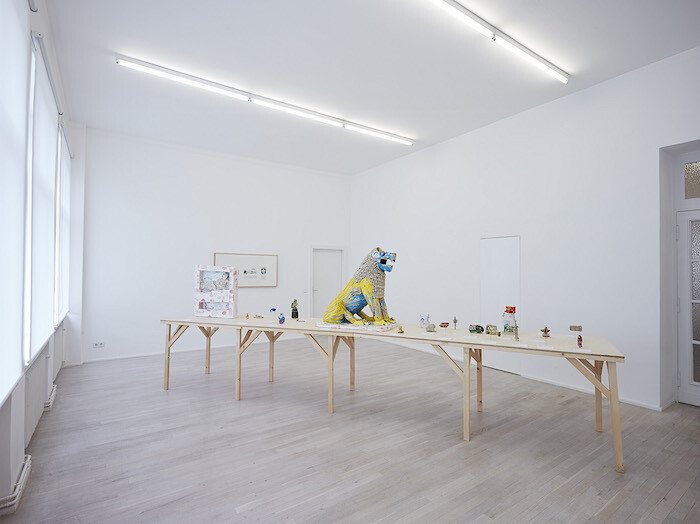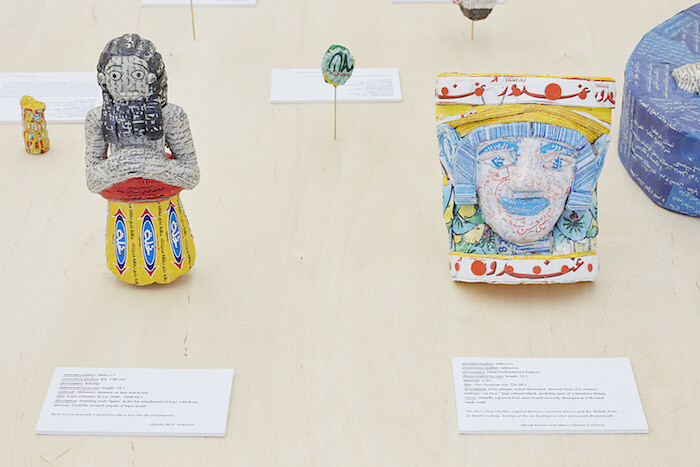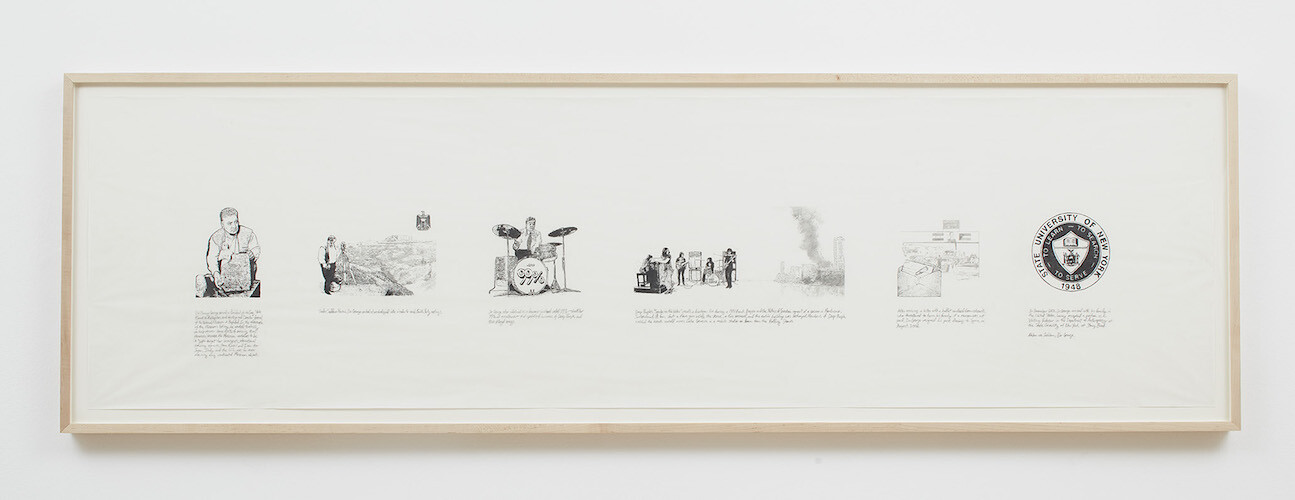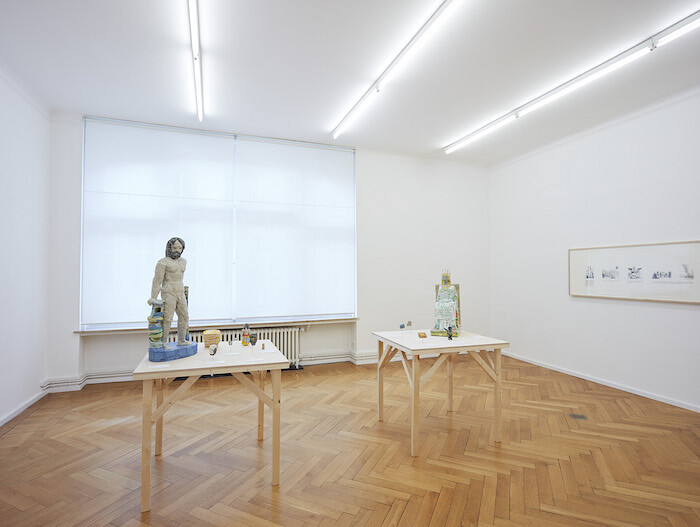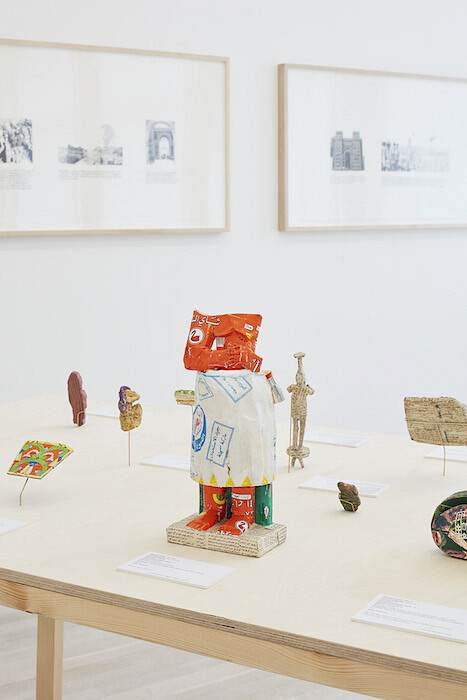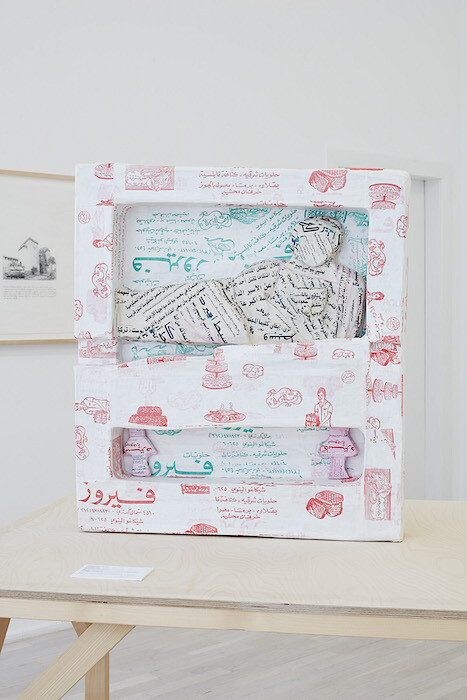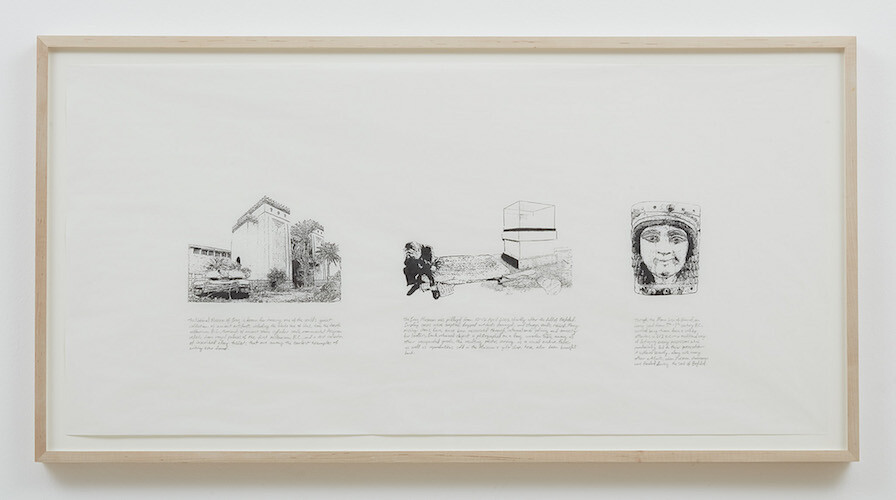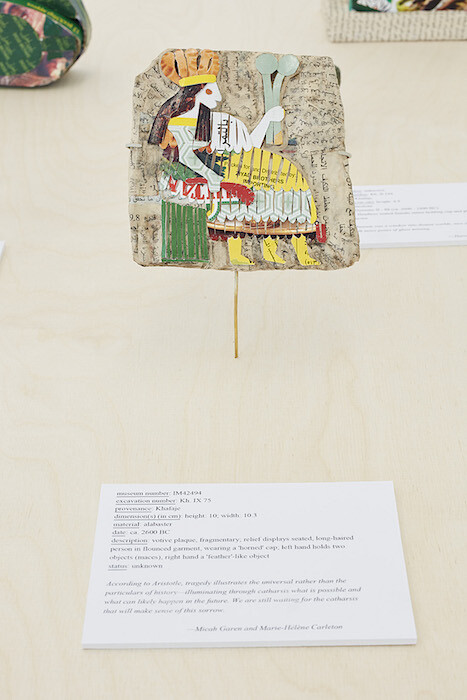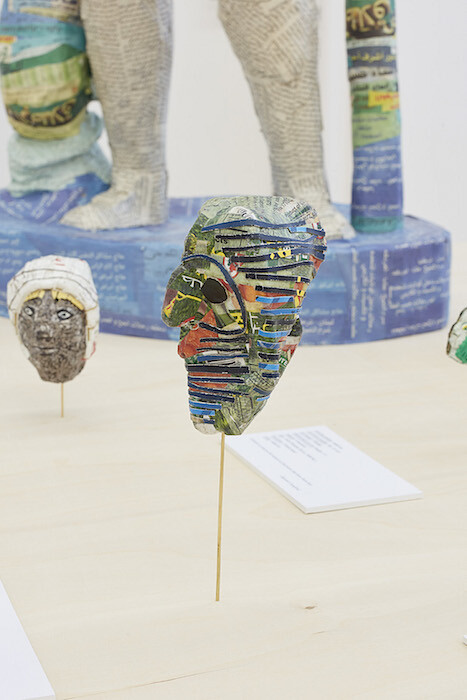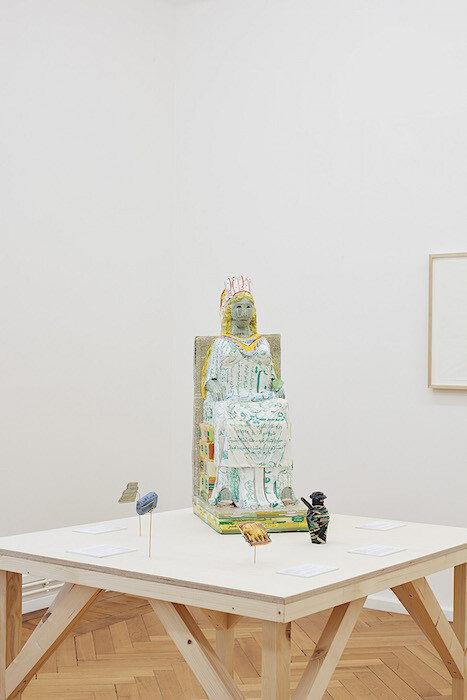The Invisible Enemy Should Not Exist (Aj-ibur-shapu), from which Michael Rakowitz’s exhibition at Barbara Wien in Berlin borrows its name, was how the street which ran through the gate of Ishtar, in ancient Babylon, was known. Built around 575 BC under King Nebuchadnezzar II and dedicated to the goddess Ishtar, the gate was made of glazed brick covered in lapis lazuli and decorated with alternating rows of dragons and aurochs. Unearthed in 1899, the site where the gate originally stood was greedily excavated by German self-taught archaeologist Robert Koldewey, who lifted up the entire tower and shipped it to Berlin, where it still stands as the main attraction of the Pergamon Museum. Though Iraq repeatedly protested this heritage seizure, the gate—much like the ancient Greek Pergamon Altar, taken from present-day Turkey—was never returned.
In the nineteenth century, archaeology was a discipline mainly deployed in countries where its practitioners had no cultural relation to the population whose history they unearthed. When Europe elected Babylonia as the origin of (its) civilization, it did not simply appropriate its archaeological treasures, it also appropriated its history. Implicated in foundational myths and nation-building, archaeology became tied to colonial history: everyone has a claim to Babylon, except modern-day Iraq.
Though Western institutions never reckoned with this history, the plunder rationalized in the name of archaeology pales in comparison to the havoc wreaked by the Iraq War. In the wake of the US-led invasion, in 2003 the vast majority of Iraqi libraries, museums, and archeological sites were looted, vandalized, flooded, set on fire, or otherwise destroyed. Not even the fog of war can account for such extensive damage. Fernando Baez (author of The Cultural Destruction of Iraq, 2004, and A Universal History of the Destruction of Books, 2010), estimates that, partially due to the coalition’s direct actions, and partially due to criminal negligence, one million books, 10 million documents, and 14,000 archaeological artifacts were lost during the occupation.1
Whatever the intentions at play, the dismantling of state institutions and protections is always tied to the narrative of “failed states.” In The Shock Doctrine (2007) Naomi Klein quotes Peter McPherson, the senior economic adviser to Paul Bremer, the former Administrator of the Coalition Provisional Authority of Iraq, saying that the ongoing looting didn’t bother him.2 Since his job was to radically downsize the state and privatize its assets, “the privatization that occurs sort of naturally when somebody took over their state vehicle, or began to drive a truck that the state used to own, was just fine.” A veteran bureaucrat of the Reagan administration and a firm believer in Chicago School economics, McPherson saw the pillage as a form of public-sector “shrinkage,” some sort of do-it-yourself privatization, Klein argues, concluding that it is impossible to entrust the preservation of collective memory to an ideology that abhors any possible form of enunciating a collective subject.
Michael Rakowitz’s “The invisible enemy should not exist” is an attempt to undo the cultural erasure of Iraq. Dedicated to Dr. Donny George Youkhanna, the former director of the National Museum of Iraq who, until his death in 2011, devoted his career to the pursuit and recovery of the stolen antiques, Rakowitz’s ongoing project aims at recreating, one by one, the thousands of artifacts looted from its facilities.
In 2010 the artist, whose mother’s family fled Iraq in 1946, exhibited a replica of the Ishtar Gate at the exhibition “On Rage” at the Haus der Kulturen der Welt in Berlin. It was modeled after a smaller version erected by Saddam Hussein which, in occupied Iraq, became a tourist attraction for soldiers and private contractors. Made of packaging materials and papier-mâché, Rakowitz’s is a copy of a copy whose original was roughly three kilometres away in another Berlin museum. Underscoring these historical continuities, “The invisible enemy should not exist” links the theft of the Gate of Ishtar to the ongoing pillage. As the artist never had the chance to see the original objects, the life-size replicas exhibited at Barbara Wien, also made of papier-mâché and leftovers of packaging materials from the Middle East, are modeled on the information Rakowitz could find in the database of the University of Chicago’s Oriental Institute and on Interpol’s website.
The resulting colorful, free-standing figurines, wildly variant in size, each of which represents a lost artwork returned to cultural life, are exhibited atop several tables, which recreate the processional path of Aj-ibur-shapu. Mimicking archeological exhibition modes, the minute lions, stela fragments, winged deities, falcon-headed sphinxes, archers, and reclining female figures are all accompanied by ancillary captions detailing their provenance, material, dimensions, data of discovery, and description. To these seemingly neutral descriptors, the artist adds statements from intervening agents: curators arguing whether bricking up the storage rooms would have protected the collection; anecdotes about how some items were returned; comments on how stolen antiques rank third after drug smuggling and weapons sales in the international black market; and grief over the immensity of the losses. Donald Rumsfeld is quoted claiming that the copious images of looting are simply the same image played several times over: “Is it possible that there were that many vases in the whole country? (laughs).” Dr. Donny George Youkhanna appears in a small pencil drawing, The Ballad of Donny George (Recovered, Missing, Stolen series) (2007-ongoing), playing drums. The bass drum reads “99%,” the name of his former band.
Rustic and naïve-looking, both the figurines and the ancillary drawings stand in stark formal contrast to the patrician originals, which fell through the crevices of geopolitics. But this folksy character and the kindness it exudes is no accident; it’s a tribute to the resilience of cultural idioms and their ability to traverse the gap between high art and popular culture, and an indictment of the contradictions that plague our cultural sectors and their complicit entanglement of different notions of value—cultural, symbolical, monetary—into a rapacious and murderous mess.
Over 40,000 religious manuscripts were destroyed in a fire in Nasiriyah set by coalition forces in May 2004; also in 2004, Italian Carabinieri were caught trying to smuggle looted artifacts into Kuwait; the British Museum accused Polish forces of destroying parts of ancient Babylonian ruins by covering the site with asphalt in order to drive their heavy vehicles; bricks were gouged out from the Gate of Ishtar; ancient walls were tagged with “I love Mary.” Manuscripts that were being kept under armed guard at the Qadiriyya Mosque complex in Baghdad were left unattended when US troops, obeying the policy to shoot on sight every armed Iraqi, murdered the guards.
Quoted in Naomi Klein, The Shock Doctrine (Toronto: Knopf Canada, 2007), 427. I thank Jan Peter Hammer for bringing this quote to my attention.

